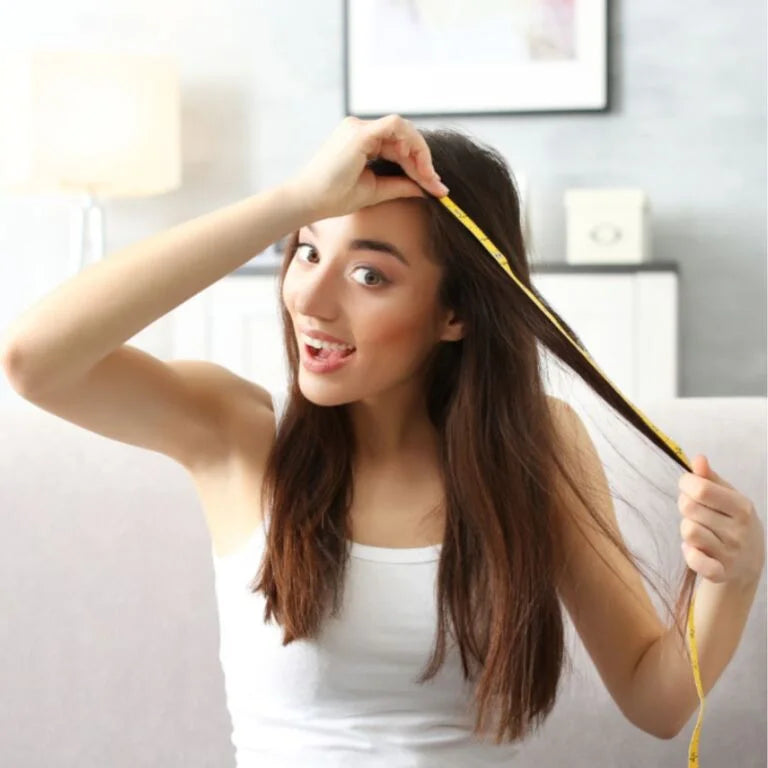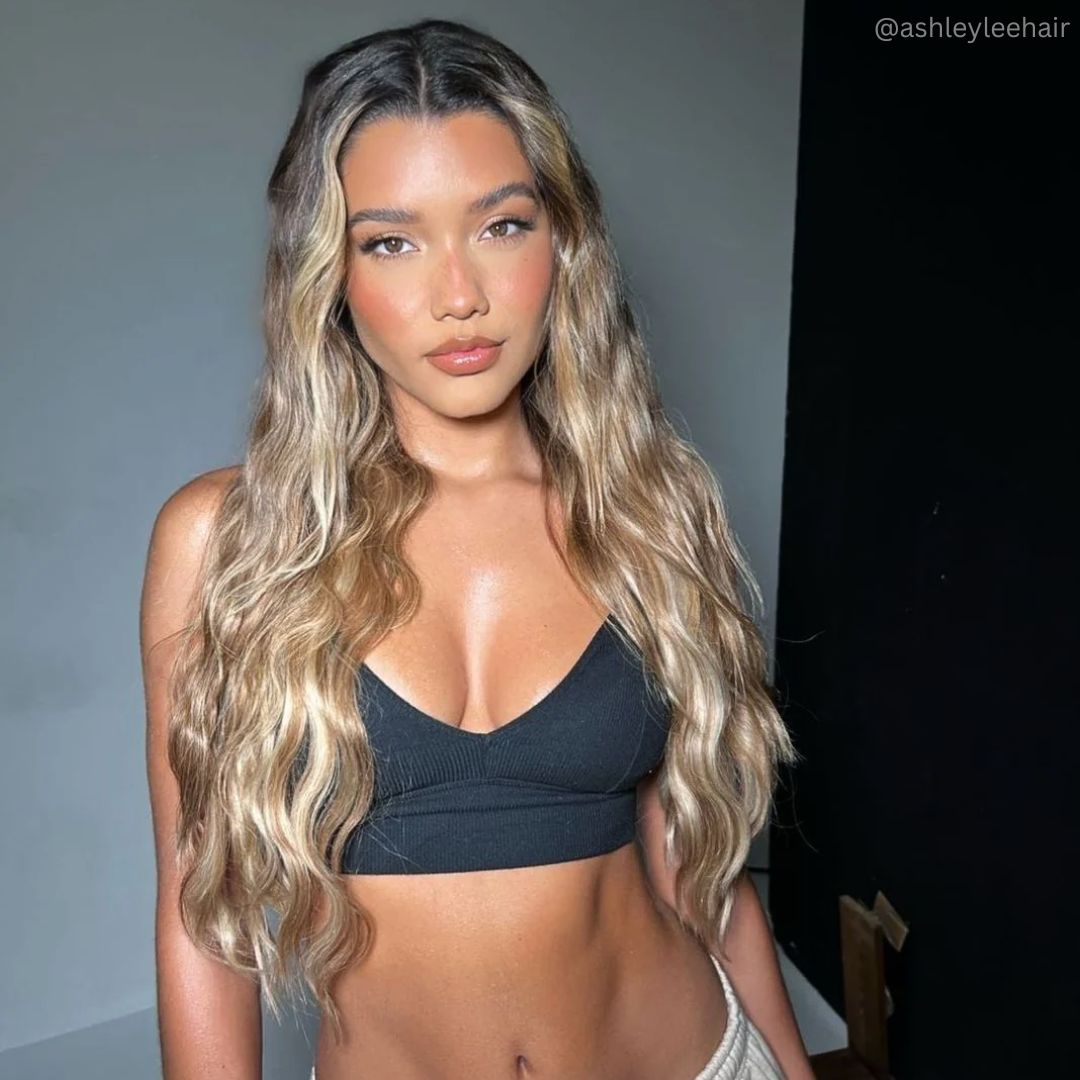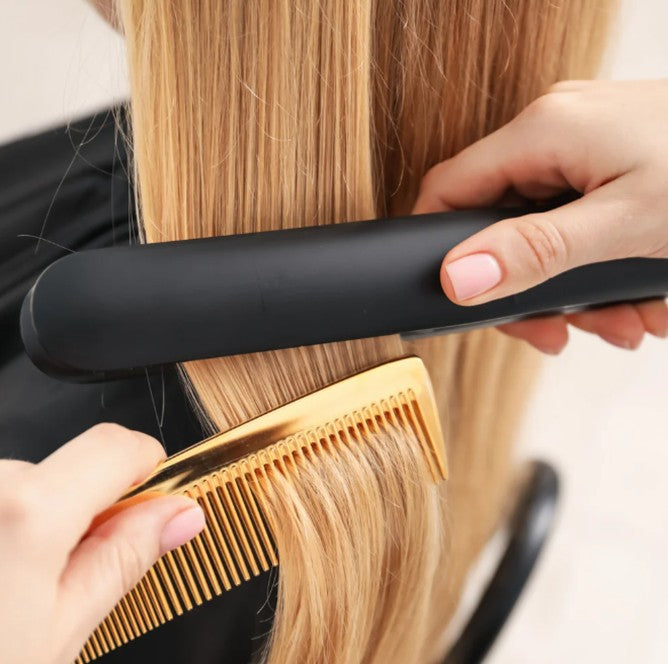How to Prevent Hair Extensions Matting
by ABBEY WILSON / AUG 2, 2023

Reading Time: 6 Minutes
Index
Matted hair extensions are a somewhat common issue that’s mostly caused by incorrect care and neglect. Thankfully, there are many things you can do to prevent your hair extensions matting and many hair extension care tips you can take on board to remove it once it has formed. Preventing hair extension matting begins with a diligent haircare routine. Removing matted hair extensions can be a delicate process, so take your time to minimise any potential damage to your natural hair. Regular maintenance and proper haircare are crucial in keeping your extensions looking their best.
What Does Matting Mean?
Matted hair is severe knotting and tangles which happens most often when the hair has been neglected or when extensions have been used incorrectly. Loose hairs that naturally fall out become wrapped around or entwined with attached hair to form lumps and clumps of knots, otherwise known as matting. Knots and tangles are completely normal in even the sleekest, smoothest of hair types however matting is a much more severe form of knotting that can be very uncomfortable to remove and also damaging to hair extensions and natural hair.
Understanding Why Hair Extensions Get Matted
First and foremost, its important to understand why matting happens so you can take measures to prevent it. There are a few reasons it can happen when using hair extensions and ive listed them below from the most common causes to least likely.
- Incorrect care and neglect. This is the number one cause of matting in hair extensions and natural hair.
- Incorrect installation. Applying hair extensions incorrectly, especially permanent types such as tapes or nano ring extensions is another cause of matting.
- Bad quality hair extensions. Hair that is not Remy or human is far more likely to become matted.
- Friction and environmental factors. Severe wind, heat or excessive friction against the scalp can cause major knots in the hair and extensions.
Matting can occur in any area on the head, but it is most common around the nape of the neck underneath the main body of hair and around the crown. Both of these areas are the warmest part of the head which can be a contributing factor into the formation of knots.
Pre-Installation Preparation
Preparing the natural hair for an extension installation is an important step in preventing matting as badly applied hair extensions is a common cause of this problem.
Firstly, the natural hair should be in a strong enough condition to handle the weight of hair extensions. Badly damaged, extremely weak and brittle hair is not suitable for some permanent hair extensions as it can cause hair loss and matting at the root, this is one reason why a face to face consultation before committing to hair extensions is so important.
Before applying any professional hair extensions the hair should be completely clean, dry, detangled and preferably smooth for the best results, this will help to keep each section super neat which helps to avoid crosshairs and bad placements. Grease, dirt or leftover residue can cause bacteria to grow inside the attachments or cause the extensions to slip which could become tangled with other areas of the hair. Ensuring the natural hair is fully detangled before and during installations will help to prevent any future matting. If hair extensions are applied to hair that is dirty, knotty or unkept its more than likely that hair will become matted in the near future.
Proper Extension Selection and Placement
All permanent hair extension methods including I-tips, Tape hair extensions, Nano tip extensions and Weaves must all be applied and removed by a fully qualified hair extensionist, this is the best way to avoid any future mishaps with your extensions, especially matting. Even if you yourself are an extensionist, you still should not attempt to apply hair extensions on your own hair as its near impossible to see around the back which could cause an incorrect placement that leads to matting.
The quality of the hair you are using is also plays a big part in keeping the extensions tangle free. Low quality, un-Remy or synthetic hair extensions become knotty and deteriorate far quicker than high quality hair. Always opt for 100% human, Remy, AAAAA grade quality hair or above for professional extensions, this will ensure long lasting results with a lesser likelihood of matting. Here at Cliphair, all of our professional extensions in the Remy Royale collection are made from this top quality hair with a life span of 6-12 months.
Daily Care and Maintenance
The most common cause of hair extension matting is bad care and neglect by the wearer which is why its super important to know all the facts about looking after hair extensions before committing to them! We have a complete guide on caring for all types of hair extensions with lots of time saving tips and healthy hair regimes to keep your hair in tip top shape.
Ive listed the most important maintenance instructions below to prevent matting in hair extensions.
- Brush your hair regularly and always before washing and sleeping. Use a hair extensions friendly brush such as the Cliphair detangler or a loop brush. This will detangle the hair right from the root without damaging the extension attachments. For more brush recommendations check out our blog here.
- Wear low, loose braids or a low ponytail when you sleep. This will reduce the amount of friction on the roots, nape and crown area which in turn reduces the risk of knots.
- Invest in a silk pillowcase. This is another way to avoid friction against the hair during sleeping, it also helps to keep frizz at bay and even reduces wrinkles! For more in depth instructions on sleeping with hair extensions, click here.
- Keep the hair moisturised and hydrated. You can do this by making sure you use conditioner every time you wash and a deep conditioning mask once per week on the mid-lengths and ends. For an extra moisture splurge, invest in a extensions friendly leave in conditioner which will not only add hydration but it also prevents the hair from drying out after washing. Well-conditioned hair is much easier to brush and manage.
- Attend your maintenance/reposition appointments. This is where your stylist will check for matting and move your extensions back up so they are not loose and hanging.
- Separate your bonds after every wash. Sometimes during a shampoo scrub you can accidently rub the bonds of your extensions into each other which can cause them to entwine, this will encourage matting if not removed immediately. As soon as you start to feel any bonds at the roots becoming attached together you should gently remove with your fingertips.
- Never sleep with wet hair. This is the number one cause of matted hair extensions; the hair is more fragile when its wet so it naturally knots quicker than when its dry.
Avoid Matting at the Nape and Root
Matting at the nape of the neck and the roots are the most common areas to find this problem, especially for hair extension areas as they tend to be the hottest place on the head. Usually, when matting has formed around the nape of the neck its due to a lack of brushing or not brushing the hair correctly. It can be tricky to get everywhere when you have 100-200 grams of extra hair on your head but you must make sure you are getting to the underneath section when you brush to avoid the knots building up. Most people with very thick hair or extensions will section their hair into 2 or 3 parts when brushing to ensure they reach everywhere.
Conclusion: How To Remove Matting?
Preventing hair extensions from matting requires consistent and thoughtful hair extension care routines. By following simple extension maintenance tips such as using sulphate-free products, gentle brushing techniques, and minimising heat styling, you can ensure your extensions remain smooth and tangle-free. At Cliphair, we understand the importance of quality and durability in hair extensions. Our expertise lies in providing high-quality products that are designed to enhance your natural beauty without compromising on comfort or style. Whether you prefer clip-in or tape-in extensions, we offer a luxurious, wide a range of options tailored to suit your needs. Ready to keep your hair extensions tangle-free? Discover our tips and Cliphair hair extension products now!FAQs
What causes hair extensions to become matted and tangled?
Matted hair is severe knotting and tangles which is often a result of when the hair has been neglected or when extensions have been used incorrectly. Loose hairs that naturally fall out become wrapped around or entwined with attached hair to form lumps and clumps of knots, otherwise known as matting. Matting can occur in any area on the head, but it is most common around the nape of the neck underneath the main body of hair and around the crown. Both of these areas are the warmest part of the head which can be a contributing factor into the formation of knots.
Which types of hair extensions are less prone to matting?
All hair extensions are prone to matting if not treated with the correct care. The quality of the hair you are using also plays a big part in keeping the extensions tangle free. Low quality, un-Remy or synthetic hair extensions become knotty and deteriorate far quicker than high quality hair. Always opt for 100% human, Remy, AAAAA grade quality hair or above for professional extensions, this will ensure long lasting results with a lesser likelihood of matting. Here at Cliphair, all of our professional extensions in the Remy Royale collection are made from this top-quality hair with a life span of 6-12 months.
Are there specific care routines to prevent hair extensions from matting?
Prevent matting by detangling hair gently, avoiding excessive heat styling, using sulphate-free products, and storing extensions properly when not in use. If you plan on wearing permanent extensions, then it may be worth investing in a silk or satin pillow to prevent any tangles, matting or strain on your scalp or extensions. Ensure to always brush your hair before and after washing with The Wet One Detangling Brush and secure at night in a loose braid.
How can I detangle hair extensions without causing damage?
To untangle matted hair, begin at the nape of the neck and work upward, securing the rest of your hair with a clip. Apply our deep moisture conditioner or a detangling spray to each section to ease the matting, then gently separate the tangles with your fingers before using our hairbrush or pintail comb. Alternate between a hair extensions-friendly brush and comb to effectively remove knots without causing damage. After untangling, wash your hair and apply a strengthening hair mask, leaving it on for 30 minutes to rejuvenate weakened hair cuticles. This routine will help maintain healthier, more manageable hair after dealing with knots and matting.
Looking for flawless, salon-worthy hair without breaking the bank? At Cliphair, we’ve got you covered with luxurious clip in hair extensions for quick transformations and permanent hair extensions for long-lasting glam. Extensions require special care and maintenance to preserve their quality, which is why we have all the top-notch hydrating haircare products needed to keep your style on point.
Need the perfect shade? Browse our full range of human hair extensions in over 70 rich, silky shades or check out our FREE Express Color Match Service to ensure a seamless blend every time.






